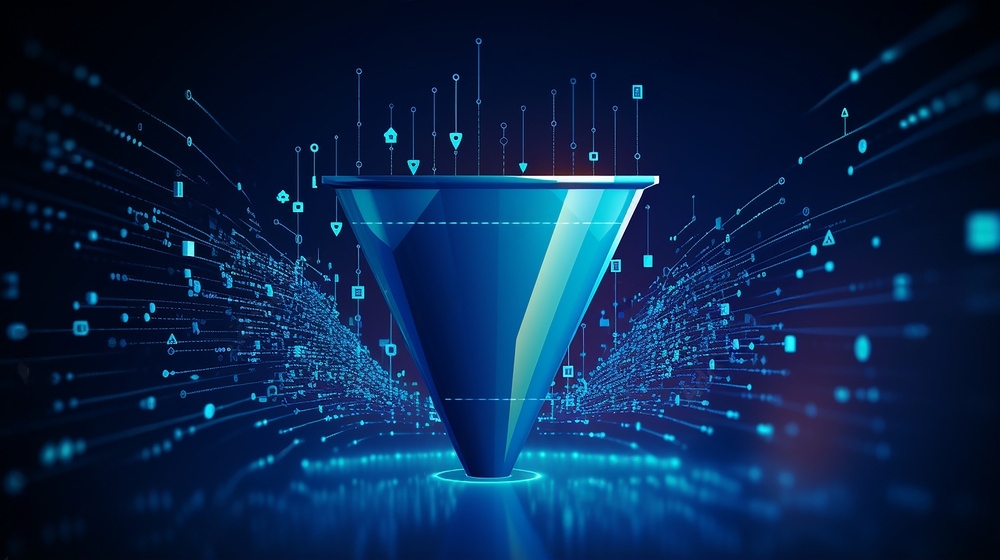Measuring Lead Generation ROI holds the reins to a business’s success. Tracking key metrics isn’t just a fancy data game; it’s the compass steering toward effective lead generation. It’s like having a roadmap to success in the business realm.
Analyzing ROI isn’t just a checkmark; it’s the heartbeat of business prosperity. Understanding these metrics isn’t about numbers; it’s about unlocking the secret vault to maximize business growth.
It’s the difference between thriving and merely surviving in today’s competitive landscape. Tracking these metrics isn’t an option; it’s the lifeline for businesses aiming to thrive and prosper.
1# Understanding Lead Generation ROI
Lead Generation ROI stands as the compass guiding businesses toward success. It encapsulates the efficiency of campaigns in converting leads into revenue, outlining the campaign’s profitability.
In the world of lead generation, ROI holds unparalleled significance in assessing campaign effectiveness, reflecting the effectiveness of strategies in acquiring valuable leads. Unlike other marketing efforts where ROI may encompass broader metrics, in lead generation, it hones in on conversion rates, cost per lead, and lifetime value of customers.
The calculation of ROI in lead generation differs in its focus on specific metrics tied directly to the generation of potential customers. It’s not solely about revenue; it’s about the value each lead brings to the business. For instance, analyzing cost per lead and conversion rates holds more weight than general revenue in lead generation campaigns.
Improved ROI in lead generation can catalyze overall business growth. By understanding the true value each lead brings and optimizing strategies to enhance these metrics, businesses can amplify their profitability.
A higher ROI signifies not just effective lead generation but also streamlined processes, improved targeting, and increased revenue, ultimately propelling business growth and sustainability in a competitive market landscape.
2# Key Metrics for Measuring Lead Generation ROI
In the world of lead generation, metrics serve as the vital signs gauging campaign health. They’re like puzzle pieces that, when pieced together, reveal the bigger picture of ROI success. Let’s dive into these key metrics—Conversion Rate, Cost per Lead, Customer Acquisition Cost (CAC), and Lifetime Value (LTV) of a Customer.
Conversion Rate is the pulse indicating how effectively leads translate into customers. It’s the measure of campaign success in turning prospects into paying clientele. Cost per Lead is the financial heartbeat, revealing the expense incurred in acquiring each potential lead. Customer Acquisition Cost pinpoints the investment needed to secure a new customer, shedding light on the campaign’s cost-effectiveness. And lastly, Lifetime Value of a Customer showcases the long-term value each customer brings, emphasizing the sustainability of acquired clientele.
These metrics aren’t just numbers on a chart; they paint a vivid picture of campaign efficacy. Take, for instance, a software company. By tracking Conversion Rate, they ascertain how many free trial users convert to paying subscribers. Analyzing Cost per Lead reveals the expense to acquire each trial user, while Lifetime Value showcases the revenue these users generate over their lifetime as subscribers. Together, these metrics sculpt a roadmap for refining strategies and amplifying ROI success.
3# Tools and Technologies for ROI Measurement
In the dynamic world of lead generation, having the right tools at your disposal is like wielding a treasure map to ROI success. Analytics and Customer Relationship Management (CRM) tools are the secret weapons empowering businesses to accurately measure their lead generation ROI.
Tools like Google Analytics, HubSpot, and Salesforce CRM are like navigational stars guiding businesses through the labyrinth of data. They’re not just platforms; they’re treasure troves of insights, capable of tracking and analyzing key metrics crucial for ROI assessment. From Conversion Rates to Customer Acquisition Costs, these tools unravel the performance of campaigns, offering a comprehensive view of lead generation efficacy.
The functionalities of these tools aren’t just about data collection; they’re about transformation. They sift through masses of information, distilling it into actionable insights. With features like campaign tracking, customer segmentation, and lead scoring, they streamline the process, making ROI measurement more accessible and efficient.
The benefits of leveraging such tools extend beyond numbers and charts. They empower businesses to make informed decisions, refine strategies, and optimize campaigns for maximum impact. They’re the catalysts for ROI improvement, aiding businesses in making strategic moves that lead to sustainable growth and success in the competitive market landscape.
4# Strategies for Enhancing Lead Generation ROI
When it comes to enhancing Lead Generation ROI, it’s all about leveraging insights as fuel for strategic optimization. It’s like fine-tuning an engine to run smoother and faster. By deciphering key metrics’ insights, businesses can map out a route to ROI enhancement.
A/B testing emerges as the scientist’s lab, conducting experiments to decipher what works best. Testing different ad copies, landing page designs, or email subject lines allows for data-driven decisions, refining strategies for better ROI. Personalized content is the magician’s wand, creating an emotional connection with prospects. Tailoring messages to individual preferences and needs boosts engagement and conversion rates.
Segmentation is the strategist’s toolkit, dividing the audience into specific groups based on behavior or demographics. Targeting these segments with tailored content amplifies relevance and impact, ultimately improving ROI.
These strategies aren’t just theories; they’re proven success stories. Take a retail brand, for example. By conducting A/B tests on their website’s checkout process, they identified bottlenecks and optimized the flow, resulting in a notable increase in conversions. Another instance involves a software company; segmenting their email list and delivering personalized content led to a significant surge in engagement and conversions. These real-world success stories highlight the potency of these strategies in driving ROI improvement.
5# Challenges and Solutions in Measuring ROI
In the pursuit of accurately measuring Lead Generation ROI, businesses often encounter a labyrinth of challenges that cloud the path to precise calculation. One such challenge lies in attributing conversions to specific touchpoints. The journey from lead to conversion spans multiple interactions, making it arduous to pinpoint the exact contributing factors. Additionally, aligning metrics across various platforms or campaigns often leads to discrepancies, muddling the clarity needed for precise ROI assessment.
However, amidst these challenges, there exist pathways to clarity. Implementing robust tracking mechanisms, like multi-touch attribution models or using dedicated CRM tools, aids in tracing a lead’s journey, offering a clearer view of contribution sources. Regular data cleansing and unifying metrics ensure consistency across platforms, minimizing discrepancies.
Moreover, industry-specific challenges often throw a curveball, demanding tailored solutions. For instance, in the service industry, where lead nurturing takes longer, emphasizing long-term value metrics like Lifetime Value becomes pivotal. Similarly, the e-commerce sector might focus on improving cart abandonment rates to enhance ROI.
Adaptability stands as the cornerstone in this quest for precision. Embracing evolving technologies and strategies, customizing approaches to fit industry nuances, and fostering a culture of data-driven decision-making are essential. By recognizing and surmounting these challenges with tailored solutions, businesses can navigate the maze of lead generation ROI measurement more accurately.
6# The Future of Lead Generation ROI Measurement
The future of Lead Generation ROI measurement stands at the crossroads of innovation and adaptability, heralding a transformative era in tracking campaign effectiveness. Emerging trends reveal a shift toward predictive analytics, employing AI-powered algorithms to foresee leads’ behaviors, enabling proactive strategies. This evolution marks a move beyond hindsight analysis, empowering businesses to anticipate and act rather than react.
Advancements in technology, particularly in machine learning and automation, are poised to revolutionize ROI tracking. These tools offer deeper insights, automating complex data analysis to unearth actionable patterns swiftly. Personalization further takes center stage, transcending beyond mere segmentation. Hyper-personalization, driven by predictive analytics, tailors messages to individual preferences even before leads articulate their needs.
Amidst these developments, the clarion call for businesses echoes the need for adaptability. Staying updated with these emerging trends and adopting agile methodologies becomes paramount. The dynamic market landscape demands a proactive stance, urging businesses to pivot swiftly, embrace technological innovations, and integrate predictive analytics into their strategies.
In this swiftly evolving landscape, the key to sustained success lies in remaining abreast of these innovations and embracing agility. Businesses that navigate this dynamic terrain with a finger on the pulse of emerging trends will undoubtedly carve a path toward lead generation ROI success in the future.
Conclusion
Measuring Lead Generation ROI is akin to navigating with a compass in a vast sea of marketing efforts. The key metrics—Conversion Rate, Cost per Lead, Customer Acquisition Cost, and Lifetime Value—serve as guiding stars, illuminating the path toward campaign effectiveness. Understanding these metrics isn’t just about numbers; it’s about unlocking strategies for business growth.
As businesses endeavor to measure ROI accurately, challenges emerge, from attribution complexities to industry-specific nuances. Yet, solutions exist, from implementing robust tracking mechanisms to adapting strategies to industry landscapes.
At Pangea Global Services, we understand the nuances of lead generation. Contact us to delve deeper into these metrics, understand how they sculpt your ROI story, and navigate the evolving landscape for sustained business growth and success.






